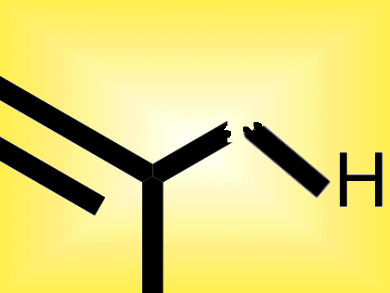The most frequent connection found in organic molecules is the one between carbon and hydrogen. The direct transformation of a C–H bond into other functions would be highly desirable in synthesis. However, C–H bonds are amongst the strongest and least reactive. Unless they are adjacent to an activating function, their direct use in synthesis is rarely possible. Recently, however, chemists have started to tackle this problem and to engage unactivated C–H bonds in metal catalyzed reactions.
This has been achieved for the first time with a highly selective reaction in which one of two C–H bonds present in an unactivated CH2 group is activated. The process, realized by a research group headed by Peter Kündig, University of Geneva, Switzerland, was applied to a coupling reaction leading to indolines with high enantiomeric purity. The group used a palladium catalyst with a monodentate chiral N-heterocyclyc carbene ligand. This provided a highly stable catalyst that could cope with reaction temperatures as high as 160 oC.
This breakthrough opens a new route to indolines, a class of compounds widely found in natural products and pharmaceuticals, that is more selective and direct. It also allows the use of simpler and more environmentally benign precursors.
- Fused Indolines by Palladium-Catalyzed Asymmetric C-C Coupling Involving an Unactivated Methylene Group
M. Nakanishi, D. Katayev, C. Besnard, E. P. Kündig,
Angew. Chem. Int. Ed. 2011.
DOI: 10.1002/anie.201102639





This is a rare achivement. With this opportunity a number of new compounds can be synthesized. Hope this can be extended to sp2 carbon hydrgen.